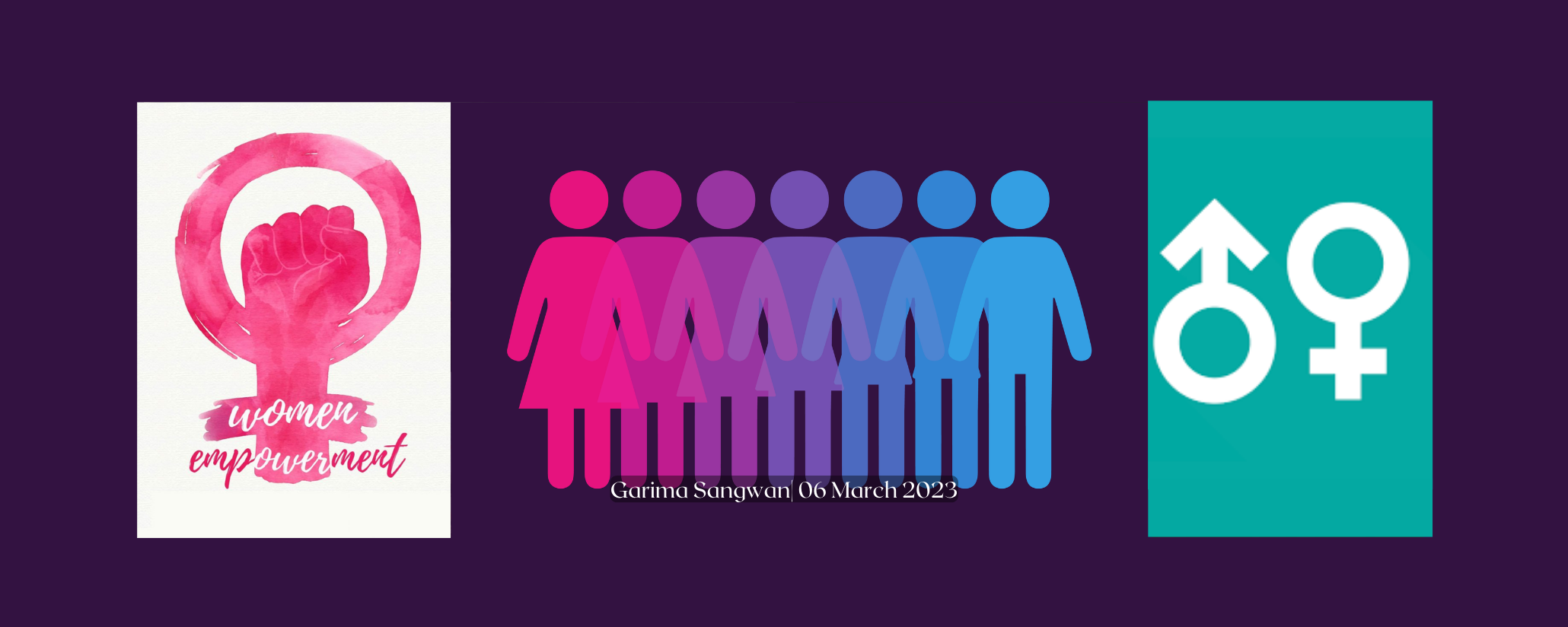There have been attempts to understand the existence of gender stratification historically and across cultures. The long-drawn struggle of feminists fighting for access to certain spaces has been predominantly regarding their participation and occupying public spaces. Why is it important to redefine the concept of public spaces? What is the need for safe public space, and why is it necessary to claim public spaces for women and, thus, for the feminist movement to succeed? Some of the major themes this article engages with are the inseparability of knowledge and spaces, the connection between space and gender stratification, and notions around women’s access to certain spaces and within supposedly correct timing brackets.
As a hidden dimension in the exertion of power, this is indicative and prescriptive. What places should women not visit and what places can women not visit at night are some of the prescriptions of such a dimension of power. Even in the busiest public spaces like the university campus or the markets, the timing for women is restrictive
The Spatial Perspective
This section attempts to understand gendered stratification through a spatial perspective, i.e, the stratification based on physical space. The spatial perspective developed here recognises the complexities of a patriarchal society and how these define gender roles, which further help sustain gender stratification in physical space. Edward T. Hall was one of the first social scientists to address space as ‘the silent language’ and the ‘hidden dimension’ (Spain, 1993). As a hidden dimension in the exertion of power, this is indicative and prescriptive. What places should women not visit and what places can women not visit at night are some of the prescriptions of such a dimension of power. Even in the busiest public spaces like the university campus or the markets, the timing for women is restrictive. For example, most of the girls’ hostels have curfew timings. Markets are considered unsafe for women beyond seven or eight at night. There is a small anecdote and observation which might help strengthen the argument. While passing by a wine and beer shop, I saw three college-going girls with their backpacks, who were restless, requesting something from the rickshaw puller who got them there. After talking to them, I learned they requested him to get a few bottles of beer for them as they were afraid to get in the shop overcrowded by men and did not wish to face the glances and judgement of those men. The rickshaw puller, in return, asked for a fee of 100 rupees over the total cost of the beer, as a price for buying beer for the girls. What is pertinent to understand here is that this incident reflects a different way in which gendered power is exerted on those girls. This emanated from a social conditioning which taught them a distinction between the spaces where women should visit or are forbidden to visit. It inhibited them from getting something for themselves despite their ‘conscious individual choice’. The idea of urban public spaces is built on the bedrock of individual choice and expression. These spaces are supposed to be free of the rigidities of private spaces. Even the most fundamental rights are claimed and granted in public spaces.
As a silent language, the mere presence of women in ‘certain spaces’ defines their ‘character’. The status of women in society is a result of many religious, cultural, and socio-economic factors. The ‘physical separation’ of women and men also contributes to and perpetuates gender stratification by reducing women’s access to socially valued knowledge’ (Spain, 1993)
As a silent language, the mere presence of women in ‘certain spaces’ defines their ‘character’. The status of women in society is a result of many religious, cultural, and socio-economic factors. The ‘physical separation’ of women and men also contributes to and perpetuates gender stratification by reducing women’s access to socially valued knowledge’ (Spain, 1993). Women’s status in society is also, to a large extent, interlinked to spatial segregation as these arrangements facilitate or inhibit women’s access to socially valued knowledge.
Space tends to be divided into masculine and feminine spaces, which has led to the ‘Gendering of Space’. It is the social stratification that gets transformed in the form of social constructions on geographic space. And this holds for any society and space irrespective of their location.
Gender and Restricted Mobility
A UN Report in the 1980s concluded that women perform nearly two-thirds of the work hours in the world, and despite having longer working hours, the spaces to which women have access are minimalistic (Siwach, 2020)
It has been highlighted by various research and reports that since patriarchal values restrict women’s physical mobility and social constructions, it inhibits their mobility on the social ladder as well. This has a huge impact on the opportunities that women get for their social and economic growth affecting women’s status in society. Scholars have noted that while the nature of work defines a woman’s accessibility to various spaces, her mobility is restricted only to those spheres where her labor is required (Datta, 2011). A UN Report in the 1980s concluded that women perform nearly two-thirds of the work hours in the world, and despite having longer working hours, the spaces to which women have access are minimalistic (Siwach, 2020).
Intersectionality also plays an inhibiting role in creating the double-and triple burden on women due to their caste, race, religion etc. For example, Pandita Ramabai, in her work, has observed that on the one hand, ‘The High Caste Hindu Women’ reflects on the restrictive mobility and opportunities for herself and, on the other hand, is an active participant in restricting the mobility and access to public space by ‘lower caste women.’ Women from ‘lower castes’ are made to experience extreme mental and sexual violence if they try to step out of their ‘boundaries’.
Knowledge and Space
According to recent data from UNESCO Institute for Statistics, “dropout rates remain high for girls as they struggle with gender disparities at every level of Access to Education” (UNESCO, 2022)
In homes, schools, offices etc., men and women are often separated in ways that sustain gender stratification by reducing women’s access to socially valued knowledge. It could be understood better while looking back on the ancient and medieval times when women’s access to public religious spaces was restricted. And these were the major centers of knowledge production. For example, women were denied entry into the temples and could not listen to the Vedic teachings. Similarly, women’s access was restricted in the masjids as well. Women’s participation was also low in the four Buddhist councils compared to their male counterparts. These religious places were spaces where knowledge was produced and exchanged via debates, discussions, and deliberations. Even recently, girls have faced severe challenges in access to education. According to recent data from UNESCO Institute for Statistics, “dropout rates remain high for girls as they struggle with gender disparities at every level of Access to Education” (UNESCO, 2022).
Conclusion
In conclusion, it’s common to think that public space belongs to everyone. However, gender inequality in public spaces starts with the invisibilisation of women in public spaces. Women’s experience in public spaces is usually more restricted than men. This has a considerable impact on their status in society. Their increasing presence in public spaces, protests, processions, and other movements is one of the most significant dimensions of their empowerment. This will bring them more political and economic opportunities, which will, in turn, break societal shackles and produce knowledge that has more space for women.
References
- Datta, A. (2011) Natural landscapes and regional constructs of gender: Theorizing linkages in the Indian contexts. Gender, Technology and Development, 15(3), pp 280-287.
- Siwach, Prerna (2020), Mapping Gendered Spaces and Women’s Mobility : A case Study of Mitathal Village, Haryana, SAGE Publications.
- Spain, David (1993) Gendered Spaces and Women’s Status, American Sociological Association
- UNICEF (2022), School Enrollment of Adolescent Girls, Global Development Commons
Garima Sangwan is a Research Intern at CSPS.




